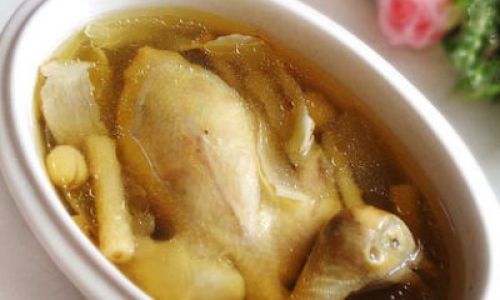Introduction
Lotus root starch, also known as lotus seed starch or lotus flour, is a traditional Chinese ingredient derived from the roots of the lotus plant. It is renowned for its delicate texture and subtle sweetness, making it a favorite among food enthusiasts and health-conscious individuals. Unlike other starches, lotus root starch has a unique translucent appearance when cooked, adding an elegant touch to desserts and beverages. Preparing lotus root starch might seem like an intricate process to the uninitiated, but with the right guidance, it can become a simple and rewarding culinary endeavor. This article aims to provide a comprehensive guide on how to prepare lotus root starch from scratch, ensuring that you can enjoy its full flavor and texture in your own kitchen.
Understanding Lotus Root Starch
Before diving into the preparation process, it’s crucial to understand what lotus root starch is and its unique properties. Lotus root starch is extracted from the tubers of the lotus plant, which grows predominantly in marshy areas. These tubers are rich in starch and contain a variety of nutrients, including dietary fiber, vitamins, and minerals. When processed correctly, the starch can be used to create a variety of dishes, ranging from translucent desserts to thickeners for soups and sauces.

One of the most notable characteristics of lotus root starch is its ability to form a translucent gel when cooked. This gel-like consistency is what gives dishes like lotus root starch pudding their signature look and feel. Additionally, lotus root starch is gluten-free, making it a suitable alternative for those with gluten sensitivities or intolerances.
Preparing Lotus Root Starch: A Step-by-Step Guide
Step 1: Selecting the Right Lotus Roots
The first step in preparing lotus root starch is selecting high-quality lotus roots. Look for roots that are firm, have no soft spots or mold, and have a fresh, earthy aroma. Avoid roots that are cracked, bruised, or have an unpleasant odor, as these may indicate spoilage.
Step 2: Cleaning and Peeling the Lotus Roots
Once you have your lotus roots, the next step is to clean and peel them. Start by rinsing the roots under cold running water to remove any dirt or debris. Use a vegetable peeler or sharp knife to carefully remove the outer skin. Be cautious not to cut too deeply into the flesh, as this can waste the precious starch.
Step 3: Grating the Lotus Roots
After peeling, grate the lotus roots using a fine grater or food processor. The goal is to break down the flesh into a fine pulp, which will make it easier to extract the starch later. If you’re using a food processor, pulse the roots until they reach a smooth, paste-like consistency.
Step 4: Extracting the Starch
Now it’s time to extract the starch from the grated lotus root pulp. Place the pulp in a large bowl and add enough cold water to cover it completely. Stir the mixture gently to prevent clumping. Allow the mixture to sit for about 30 minutes, giving the starch particles time to settle at the bottom of the bowl.
Once the starch has settled, carefully pour off the cloudy water, leaving the starch sediment behind. Repeat this process two or three times until the water runs clear, indicating that most of the starch has been extracted.
Step 5: Drying the Starch

After extracting the starch, spread it out evenly on a clean, dry cloth or baking sheet. Allow it to air-dry naturally for several hours or overnight. Alternatively, you can use a food dehydrator to speed up the process. The key is to dry the starch completely to prevent mold and ensure a long shelf life.
Step 6: Sieving and Storing the Starch
Once the starch is fully dried, sieve it through a fine-mesh strainer to remove any lumps or impurities. This will give you a fine, powdery lotus root starch that is ready to use. Store the starch in an airtight container in a cool, dry place. It should keep well for several months.
Cooking with Lotus Root Starch
Now that you have your homemade lotus root starch, it’s time to start cooking with it. Here are a few delicious recipes to inspire you:
-
Lotus Root Starch Pudding: Combine lotus root starch with water, sugar, and a flavoring agent like vanilla extract or rosewater. Heat the mixture until it thickens and becomes translucent. Pour into molds and allow to cool before serving.
-
Lotus Root Starch Jelly: Dissolve lotus root starch in water and add fruit juice or syrup for flavor. Heat the mixture until it thickens, then pour into molds and refrigerate until set. This jelly is perfect as a light dessert or snack.
-
Soup Thickener: Use lotus root starch as a natural thickener for soups and broths. Simply add a small amount of starch to cold water, stir until dissolved, and then add to the simmering soup. Continue to stir until the desired consistency is achieved.
Conclusion
Preparing lotus root starch may seem like a labor-intensive process, but the end result is well worth the effort. With its delicate texture and subtle sweetness, lotus root starch can elevate your culinary creations to new heights. Whether you’re making a traditional Chinese dessert or simply looking for a gluten-free thickener, lotus root starch is a versatile and nutritious ingredient to have in your kitchen. By following the steps outlined in this guide, you’ll be able to enjoy the full benefits of homemade lotus root starch, bringing a touch of elegance and tradition to your meals. Happy cooking!





0 comments